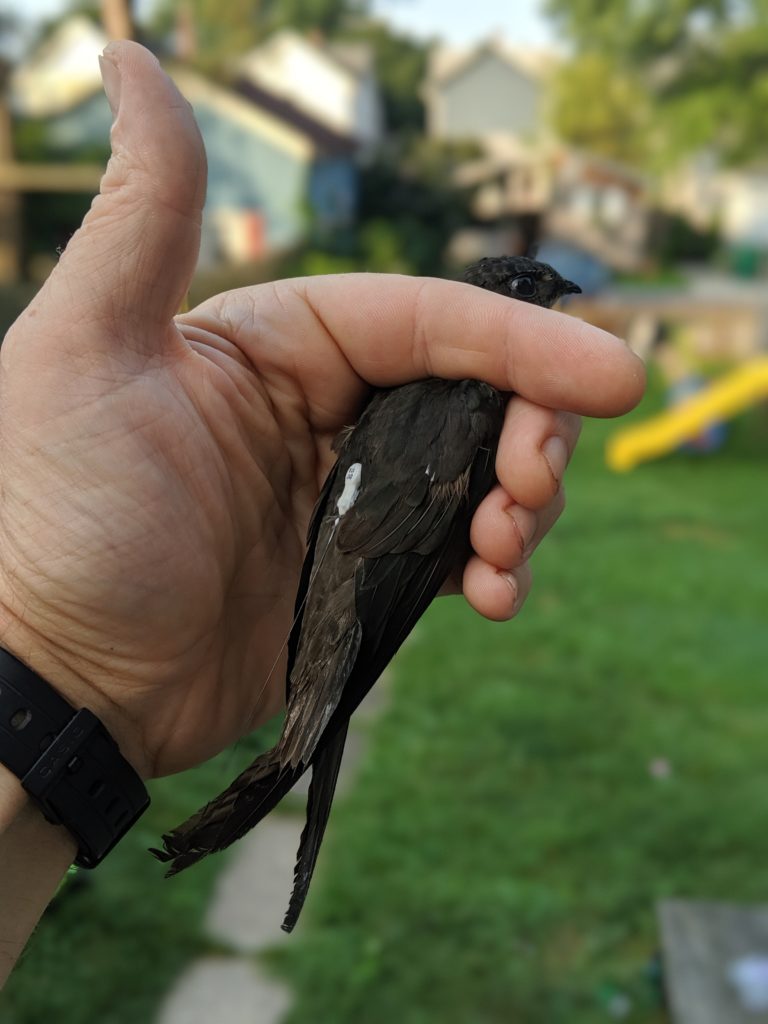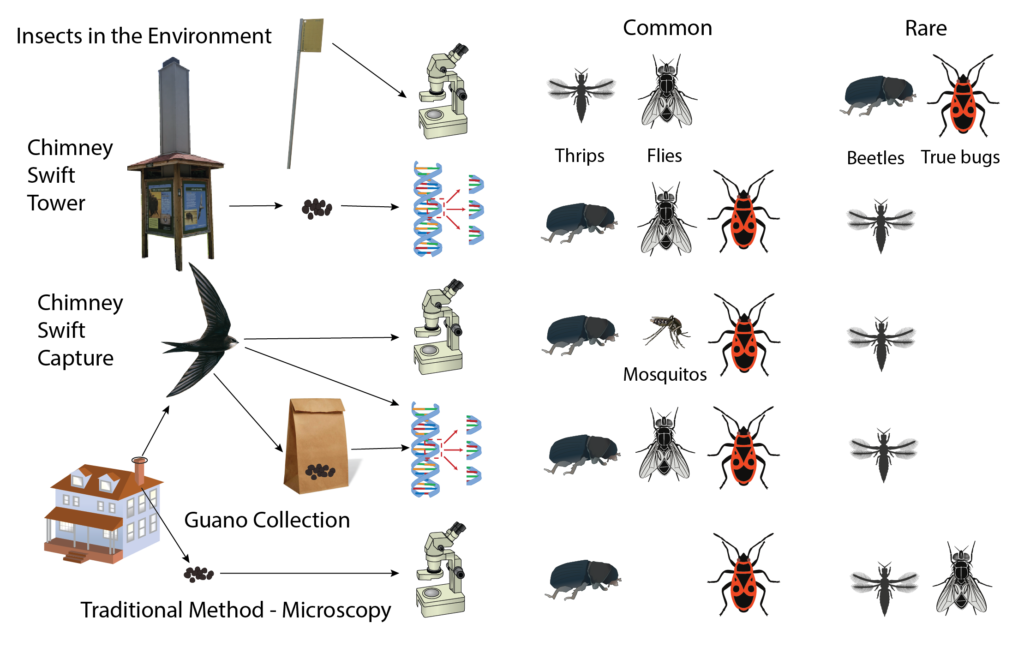
Like most aerial insectivores, Chimney Swift populations have declined precipitously over the past 60 years and their decline is likely the result of simultaneous declines of insects. But, our knowledge of the diet of chimney swifts is based on insect fragments identified from fecal samples. Therefore, we studied chimney swift diet using DNA barcoding of fecal and resurgent samples and compared Chimney Swift preference to the aerial insect community sampled with sticky traps. If the availability of preferred prey items is decreasing over time, it may be contributing to the decline of this bird over time.



Guano was collected from 8 of 14 occupied Chimney Swift towers and swifts captured at 12 residential chimneys.

DNA meta barcoding reaffirms Chimney Swift preference for beetles and true-bugs and reveals importance of flies

Coleoptera (beetles), Diptera (flies), and Hemiptera (true-bugs) were the orders most commonly detected, with 96%, 86%, and 68% occurrence, respectively. This analysis emphasizes the importance of beetles and true bugs in chimney swift diets, and also reveals the significance of flies as a prey item.
Thrips are common in the environment but rarely eaten. Beetles and true bugs are rare in the environment but common in swift’s diet. Prior research underestimated Swift’s preference for flies and even mosquitoes.

Compared to the aerial insect community sampled using sticky traps, it also appears chimney swifts are selective in their feeding habits, particularly targeting beetles even though they are not the most abundant prey item present in the environment.
